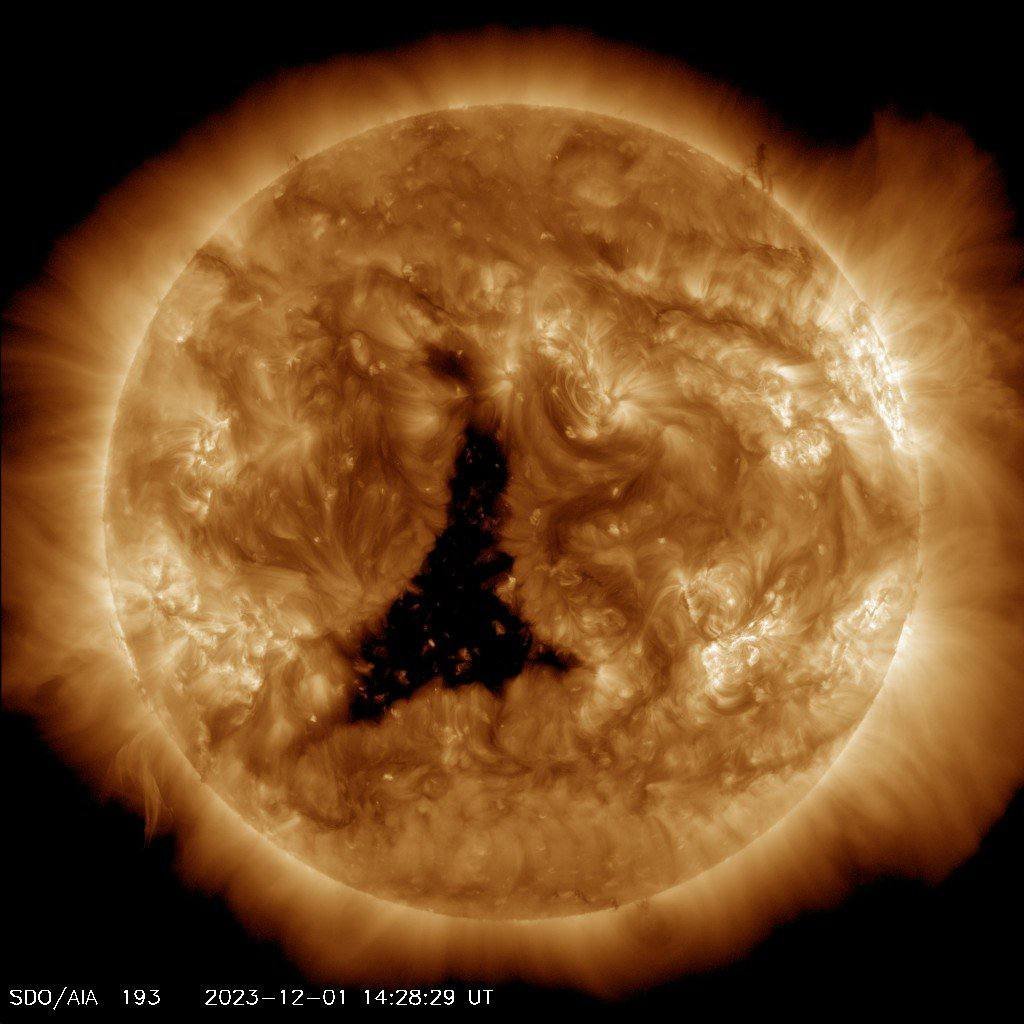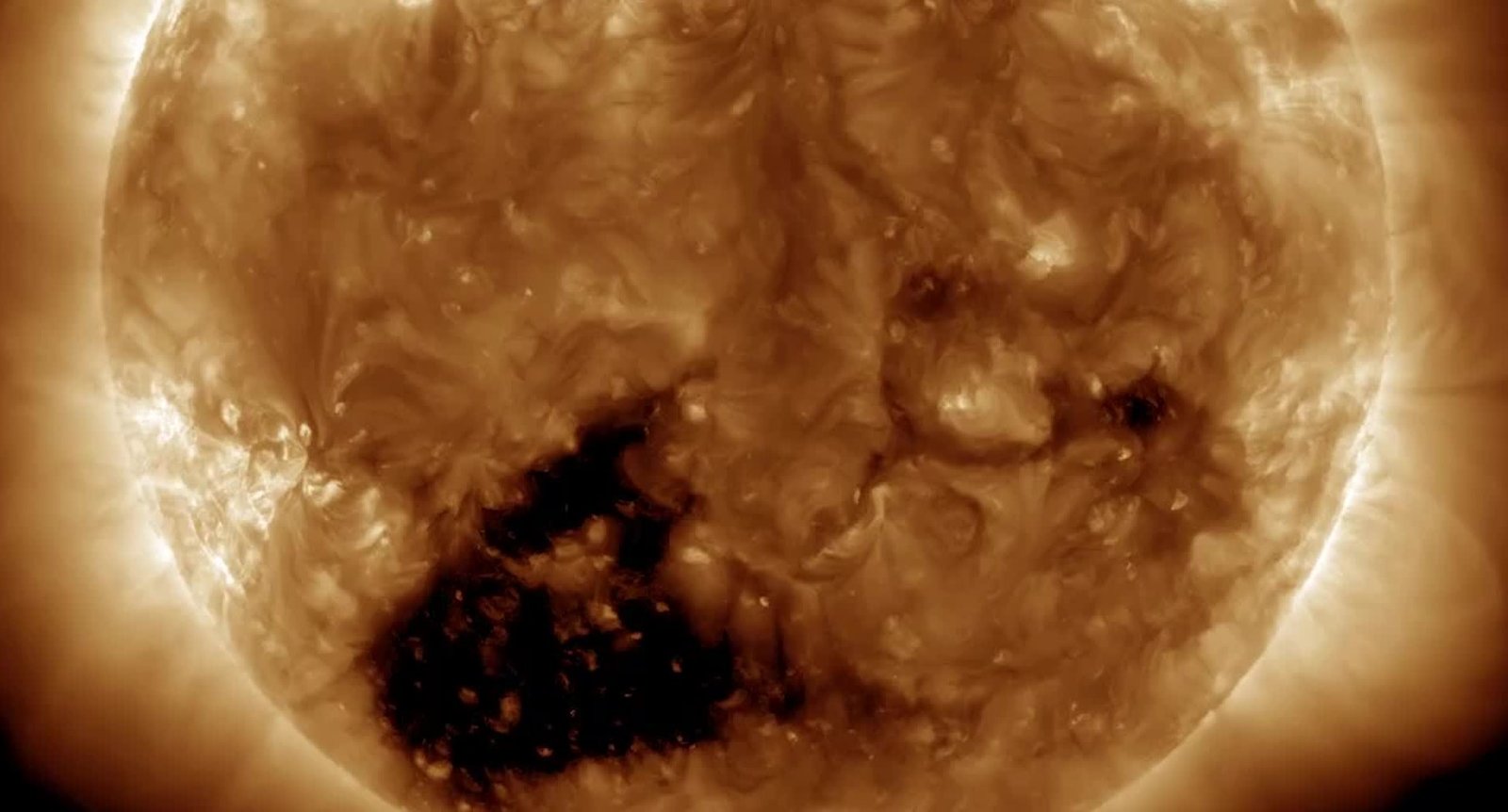A giant coronal hole in the Sun could fit 60 Earths is now exploding
A giant coronal hole in the Sun that could fit 60 Earths is now exploding, sending explosions towards Earth. The hole is rotating away from Earth but sent major explosions to Earth.
The coronal hole had reached its maximum size within a day. It has grown to an incredible width of over 4,97,000 miles. It happens as the sun nears the end of its 11-year activity cycle.
Astronomers are keeping a close eye on a massive coronal hole that has recently erupted on the sun’s surface blasting a torrent of high-velocity solar winds in our way.
NASA’s Solar Dynamics Observatory captured this phenomenon, revealing a gaping dark expanse across the Sun’s surface, nearly 800,000 km long.
This massive expanse of darkness, which appeared around the sun’s equator on December 2, has grown to an incredible width of over 4,97,000 miles. It is the equivalent of more than 60 Earths set side by side.
The coronal hole grew to its maximum extent in a day and has been squarely facing Earth since December 4. These holes are not unusual, but the size and timing of this one have drawn the scientific community’s interest.
It is especially significant since it comes as the sun reaches the highest point of its 11-year activity cycle, known as the solar maximum, which is expected to occur in 2024.
Initially, there were fears that the solar winds, which can travel at speeds ranging from 500 to 800 kilometers per second, might cause a mild G2 geomagnetic storm, potentially resulting in radio blackouts and spectacular auroras.
However, according to Spaceweather.com, the solar wind intensity was less severe than projected, resulting in merely a modest G1 geomagnetic storm. Despite the less severe impact, the chance of auroral displays exists, particularly at higher latitudes.

Click here to read the updates on Crab Nebula: An exploded star in the galaxy
The sun goes through regular activity cycles, which are distinguished by the appearance of sunspots and solar flares. As well as coronal mass ejections, and coronal holes like the current one. These events are linked to the sun’s magnetic field, which reverses polarity during the solar maximum.
Sunspots, in particular, are cooler parts of the sun’s surface with much stronger magnetic fields. Scientists are getting ready for more frequent and powerful solar activity as we approach the solar maximum.
While the current coronal hole offers no significant threat to Earth. Because it is moving away from the face of the globe. It shows the dynamic nature of our star and the need to monitor solar activity for potential impacts on our planet’s technology and environment.
Read More:
- Scientists created superflies to eat human poop & clean streets
- Samsung Galaxy Z Flip 6 5G features, specifications & price
- NASA sent first 4K video from aircraft to the space station
- Dogs behave depressed after sensing stress in dogs, study shows
- Australian govt issued notice to tech companies to report on child abuse
- Oppo K12x 5G release date, features, specifications & price
Share this content:









Post Comment